History of St Molios Church Shiskine
The first church at Clachan was built in 1708 and dedicated to St Michael. The name is preserved in several local place names, i.e. Balmichael (farm of Michael). An earlier chapel on the site is shown on Bleau's map (dated 1654) and was dedicated to St Molios. The minister preached at Clachan once a month and three times a month in Kilmory. Bryce noted that on other Sundays the members were perfectly content to worship in the Free Church, where they were also welcome. But a communion would only be celebrated at Kilmory.
The islanders owed allegiance to the House of Hamilton. After the Reformation they happily adopted the reformed church along with their overlords. But by the significant year 1843 the island had been subjected to the hugely unpopular clearance of whole villages to suit the whims of the present Earl. The people of Arran showed their disaffection in the only way they could, by rejecting the established church in favour of the newly formed Free Church.
The Clearances had upset the life-style of thousands in the Highlands and Islands. Arran's landscape is dotted with the ruins of former villages. No longer could the Duke automatically command the loyal support of the islanders. Churches were emptied, and the Shiskine congregation repaired to the 'preaching cave' at Kilpatrick, taking with them William McKinnon as their preacher and pastor, a cottar who had been hard hit by the brutal land reforms.
It was decided to build a new church in Shiskine in 1886 and a committee was duly set up. It was, at first intended, to build a chapel of ease to replace Clachan church which was becoming leaky. The book of account shows that donations came from far and wide. Especially from Glasgow and Edinburgh, but also from further afield. Many donations were from Arran, and in 1888 a sum of £250 was given by the Duke of Hamilton. The fund rose slowly as many donations were small. After two years building started, to a design of Sir James Burnet, and was completed in eighteen months. The total cost was £ 1,900, the fund closing in 1895 after a spate of concerts and other fund-raising activities. Plans had not originally included a bell, but a special meeting of 1889 agreed on this addition at a cost of £30. It actually cost £70.
